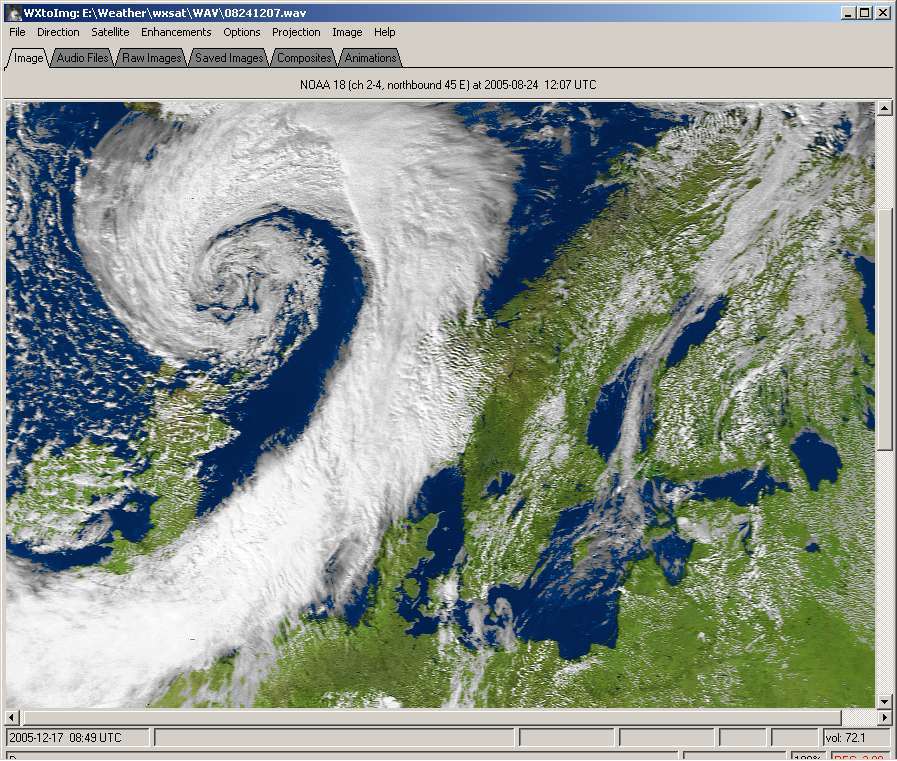

Be aware, though, that not all the download URLs in this PDF are still active.Īlso available is a much more up-to-date website by ' Happysat' which describes in intricate detail how to build a Meteor reception station from scratch. The article appeared in GEO Quarterly No 48 in December 2015, and you can download a PDF copy of it here. If you are a newcomer to Receiving Meteor with a dongle, and need additional guidance, please refer to the detailed, illustrated article I wrote, which outlines every step in the process of setting up the system from scratch. Your APT antenna for the NOAA satellites is ideal. This will activate SDRsharp, and Meteor data will be recorded automatically on every pass, under control of Orbitron.Īnd of course, you must connect a 137 MHz APT antenna (turnstile, QFH etc) to your dongle in order to receive the Meteor signals. All you need to do is run the file orbitron.exe from the 'Orbitron' folder, click the 'Rotor/Radio' tab at the foot of its display, and finally click the small button to the right of the 'Driver' window showing 'SDRsharp'. Once this is done, everything is set to go.

The Meteor frequency is set at 137.1 MHz in both Orbitron and SDRSharp.You will have to set the Tuner Correction (ppm) to precisely centre the frequency in SDR# for you own specific RTL dongle.
Wxtoimg hdsdr install#
Wxtoimg hdsdr archive#
For most users, it is sufficient to unpack the zipped archive directly on to the C:| drive when the directory tree illustrated will be installed.Įach of the Meteor LRPT Suite archives offered below will install the entire Orbitron/SDRSharp system into a folder called LRPT, and in addition, add a subfolder containing LRPTOfflineDecoder, and an empty QPSK subfolder where the received QPSK S‑files will be stored.

It is strongly recommended that you do not extract the archive into the Program Files folder, but directly on to one of your computer's drives: otherwise things may not run smoothly. Moreover, the link from Orbitron to activate SDRSharp has been made directory-independent: you can unpack the archive on any of your PC's drives (C\:, D\: etc.) and Orbitron will still link correctly with SDRSharp. It is therefore perfectly feasible to create a zipped archive which installs everything into the directory structure illustrated opposite. are present in their own folders - not hidden within the depths of Windows. They can be run from any folder, on any drive of your computer, because all their configuration files, data files and DLLs etc. Wouldn't it be great if all this could be achieved in a single step?īoth Orbitron and SDRSharp are standalone programs. Set up SDSRSharp features for LRPT receptionĪdd required Meteor and DDE Tracker plugins to SDSRSharpĬonfigure Orbitron to automatically run SDRSharpĭownload Zadig.exe to install the RTL drivers for your dongle One of the most daunting aspects of setting up a reception system for the Russian Meteor Satellites has been the intricacy of the procedure: Creating GIS Meteor images Process Historic Meteor S-Files with MeteorGIS SatSignal WxToImg WXSat Satellite FrequenciesĪ Suite for MeteorGIS is also now available


 0 kommentar(er)
0 kommentar(er)
